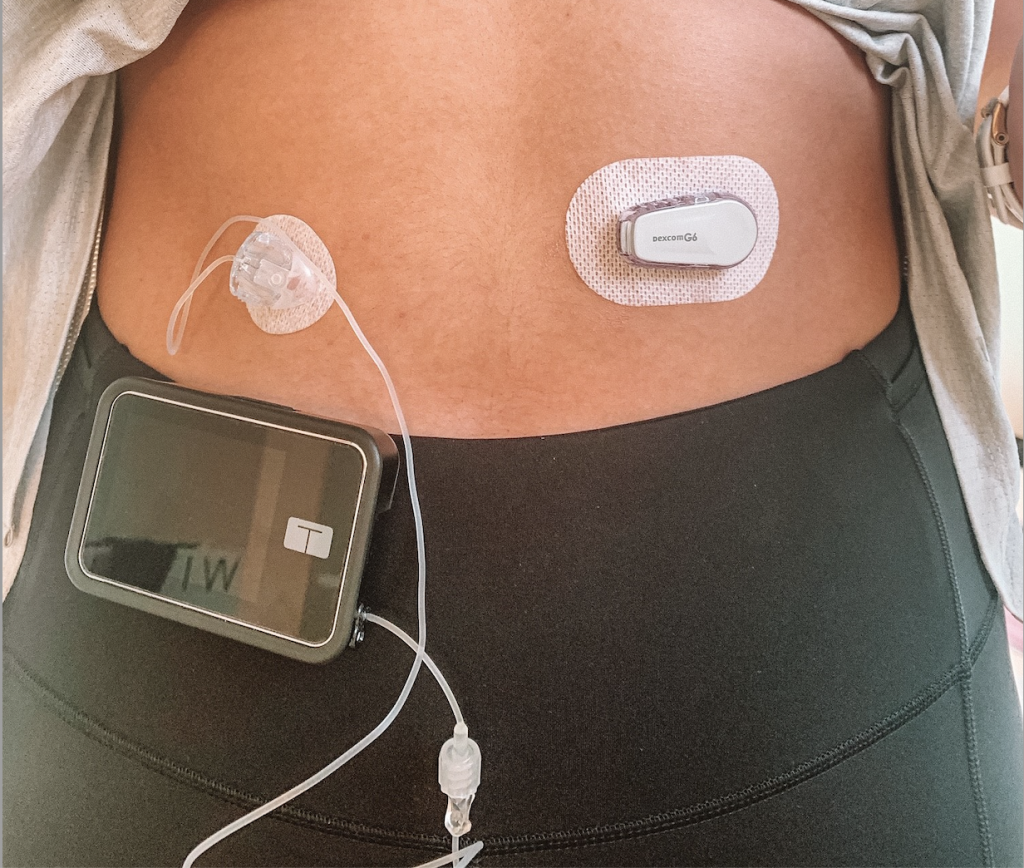

Most Type 1 diabetics have to test their blood sugar about 6-8 times on a good day and upwards of 10 times a day with uncontrolled numbers. We give anywhere from 3-8 shots a day or more if we are brittle diabetics. All of the pokes can be pretty annoying and at times painful. Also they can be very damaging on the body if not moved around frequently. This blog is going to explain the importance of rotating where you prick, inject, and insert your various diabetes supplies.
If you have been a diabetic for a long amount of time (over a year in my book) you will notice that your fingers begin to build up callouses and become harder to get blood out of. This is normal and we all have certain fingers that we prefer to poke because for some reason they bleed, and they are not quite as sensitive as other fingers. Personally, it’s my middle and ring fingers on my left hand that bleed well and don’t hurt as bad when they are pricked. However, it is important to remember to alternate which fingers you prick. If you don’t alternate fingers and give frequently used fingers a brake you may build up so much scar tissue and callouses that you may begin to lose feeing in the tips of your fingers and the damage may be irreversible. A good tip the doctor gave was to always prick on the side of the fingers I remember when I was about eleven, I was tired of pricking my fingers for the past two years to get blood and they found out you could prick your forearm to test. Well, that was too awesome to me because the arm didn’t hurt nearly as bad as the fingers did to prick. So, I got into the habit of pricking the same spot over and over on my left arm. As you can imagine I built up a lot of scar tissue in the one spot and the skin lost its elasticity so that spot on my arm is slightly raised and I have some nerve damage on it because I don’t have as much feeling there as I used to.
Another thing I have experienced is infections from leaving pump sites in too long. It certainly isn’t anything I would recommend now but I have kept a site in for over 2-3 days before. It was only out of desperation or just plain laziness and indifference towards my diabetes when I was very depressed. This was a terrible idea with very bad consequences. I remember being on vacation once and not having time in my mind to fully change my site. So I just filled up the reservoir and kept going. The site got infected, and it hurt so bad I could not put on a seat belt on the plane without severe pain on my stomach. After I got off the plane I had to remove the site because I could no longer stand the pain and when I did it was disgusting. I will spare everone reading the details, but I had to call the doctor and get them to look at it and I was prescribed some antibiotics thankfully they didn’t have to go the route of surgery for it but it was very close.
Injections should also be moved around regularly so the body can better absorb the insulin. Insulin gets injected into the fatty parts of the body and therefore gets absorbed into the bloodstream from the fatty tissue. It works best injected into the abdomen but the butt, love handle area, thighs, and the back of the arm work fine too. Just as long as you are sure to give well used areas a break every now and then. All areas need to be cleaned with alcohol before an injection/ insertion of a site/ or a prick and all areas need time to heal after they are taken out. However, if we inject in several different areas then we will keep all the different site locations healthy and ready to be used again next time we need to.
By following these easy to do instructions you will keep your body healthier which in turn will help keep your numbers down. It will also help with quicker and more effective insulin absorption into the bloodstream and we all definitely want that quick absorption rate to flatten those glucose spikes. Changing which finger you check on will also help save sensitivity in your fingertips and reduce the chance of nerve damage to the fingers.

By: Miranda Montgomery (Type 1 diabetic for 20+ years) Admin for Type 1 Diabetes Support Group on Facebook with 13.6 K members

